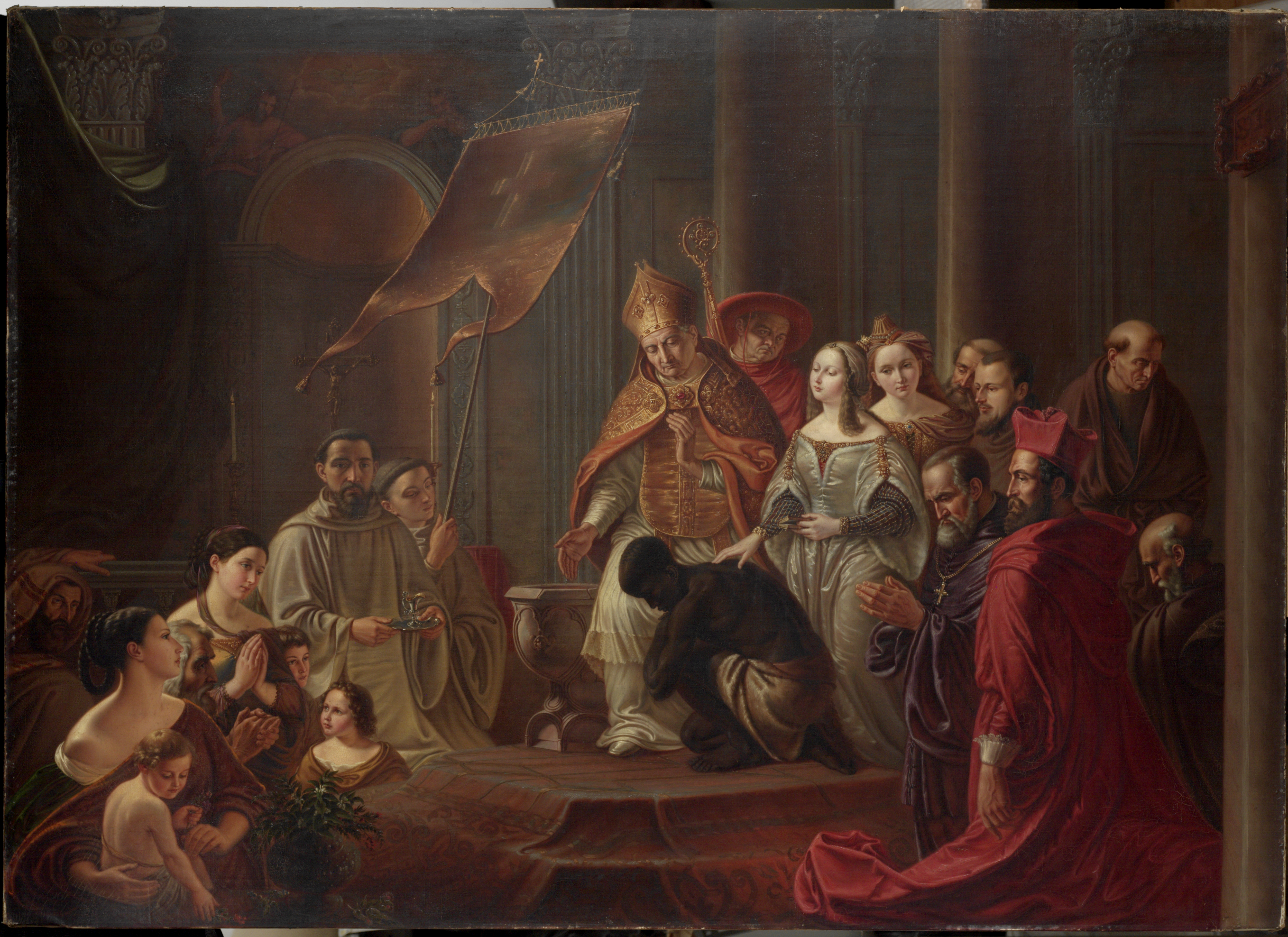Since the Middle Ages, Christian baptism was a necessary step for Africans and their descendants to achieve a secure position within German society, especially in the courts. By the nineteenth century the idea that religion could overcome any other differences was still very appealing, and missionaries drew on this to build support for their activities overseas and at home. At the same time, though, religion’s integrating potential was greatly undermined by the inequities and iniquities of imperialist expansion, not least the racist mythologies that grew out of it.
In this work, the painter Ludwig Emil Grimm depicts the convert in the position of a supplicant, wearing little clothing and bowing deeply before high church officials, noble patrons, and other white men and women who give their blessing and pray on his behalf. The image criticizes the presumption of European superiority in one sense; all nonbelievers around the world are worthy of the Church’s attentions, and this man can expect the support of his powerful patrons. At the same time, the lone Black figure suggests that such converts are but passive targets of this mission who are only granted civilization through the generosity of white benefactors. Such an image contrasted markedly with the lives of prominent individuals like Ignatius Fortuna, Angelo Soliman, not to mention the lives of Black missionaries who worked both in Germany and abroad.
Jeff Bowersox
deutsch

Source: Ludwig Emil Grimm, Die Mohrentaufe (1841), Museumslandschaft Hessen Kassel.

Ludwig Emil Grimm, The Moor’s Baptism (1841) by Jeff Bowersox is licensed under a Creative Commons Attribution-ShareAlike 4.0 International License.
Permissions beyond the scope of this license may be available at https://blackcentraleurope.com/who-we-are/.